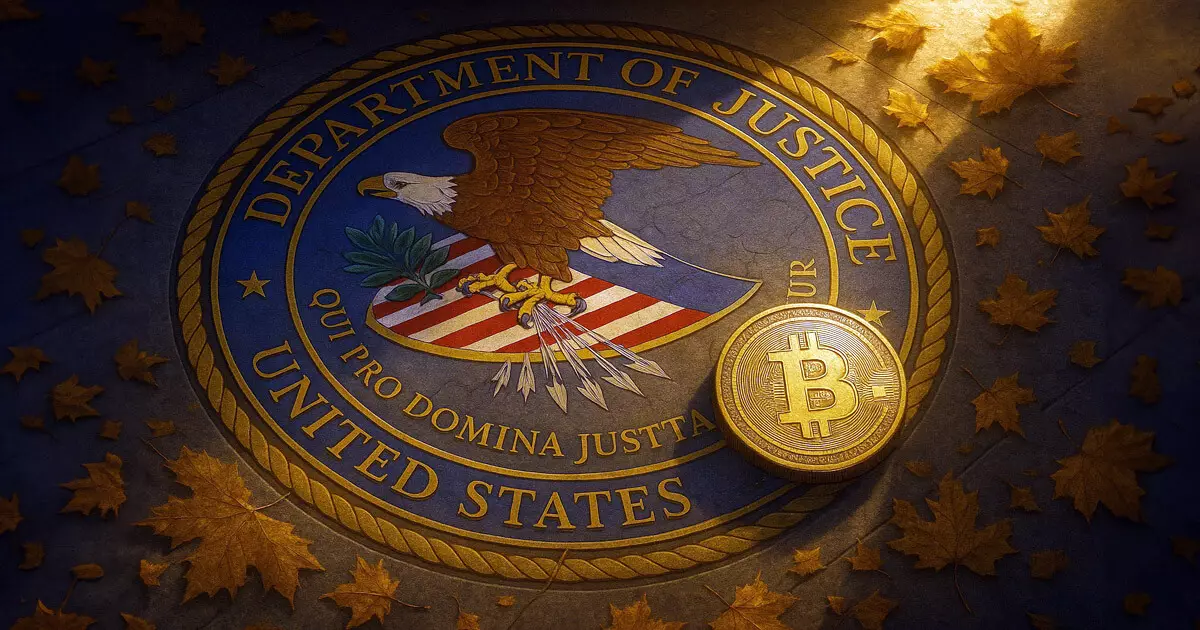In an era where digital assets promise revolutionary change in our financial landscape, the recent review by the U.S. Department of Justice (DOJ) exposes a painfully outdated compensation system for victims of digital asset fraud. As cryptocurrencies have matured and grown in complexity, the mechanisms for compensating investors who have fallen victim to fraud or theft are stuck in the past. Notably, victims of high-profile collapses like FTX, Celsius, and others have been receiving reimbursements based on outdated valuations rather than the current market rates. This not only undermines investors but highlights systemic issues embedded within our legal structures that are unfit for a digital age.
The crux of the issue lies in the fact that the compensation is calculated based on the value of assets at the time of claim submission, failing to account for the potential appreciation of these assets. For example, Bitcoin, which was valued at under $20,000 when FTX declared bankruptcy in November 2022, skyrocketed beyond $108,000 by January 2025. This is a staggering 500% increase—a significant missing opportunity for investors who have already suffered loss. How can a regulatory body justify offering payouts that starkly contrast with the current value of the asset?
Ignoring Asset Appreciation Is a Grave Injustice
The DOJ’s acknowledgment that regulations confine recovery to archaic dollar values undercuts any premise of modern justice for cryptocurrency investors. This stifling regulatory environment not only devalues the plight of victims but perpetuates the perception that their sufferings are secondary to bureaucratic inefficiencies. The time value of money is an established principle in finance, and ignoring the potential growth of digital assets omits a critical consideration in cases of fraud or insolvency.
It’s particularly egregious that investors can watch their assets soar in value while they are left tethered to outdated figures that do not reflect the current economic reality. The lack of reform suggests a failure to recognize the unique characteristics of digital assets and how they operate within a volatile market. Advocates like “Mr. Purple” have rightfully called for reforms in bankruptcy laws to accommodate this new asset class. If the existing frameworks cannot keep pace with emerging technologies, they risk alienating a significant portion of the public—potentially hindering investment and innovation.
The DOJ’s Shift in Plan: Necessary But Insufficient
In light of these challenges, the DOJ’s decision to re-evaluate digital asset regulations reflects an acknowledging of the contemporary financial landscape. Disbanding its National Cryptocurrency Enforcement Team (NCET) in favor of focusing on clear criminal activities sounds like a prudent strategy on the surface. However, without substantial reforms to the underlying legal frameworks and valuation methods, how effective can this initiative truly be?
The idea of streamlining efforts and avoiding unnecessary probing into lawful entities like crypto exchanges and wallets should be viewed with skepticism. While it’s essential to differentiate between lawful and unlawful actors in the cryptocurrency sphere, this should not come at the cost of leaving victims of fraud in a lurch. Furthermore, the DOJ’s participation in President Trump’s Working Group on Digital Asset Markets may indicate a willingness to engage, but will it translate into meaningful action for the victims? Clarity for digital asset companies is indeed necessary, but that clarity must equally extend to protections for investors.
Reforming the Regulatory Landscape: A Call to Action
The pathway to justice for victims of cryptocurrency fraud is not merely about updates to laws or enforcement strategies; it is about fundamentally reassessing our approach to valuing digital assets. The market is fluid, and so should be our response to its inevitable fluctuations. A comprehensive review must not only embrace the realities of digital assets but also prioritize investor rights, allowing them to reclaim what has been unjustly stripped away.
The upcoming evaluations by the Office of Legal Policy and the Office of Legislative Affairs must not be a mere formality but should catalyze substantial legislative reform that empowers victims rather than suffocating them under outdated practices. Fundamentally, our regulatory environment must advance in step with technology. If we remain anchored in our confined and outdated views, we risk not only disenfranchising victims but also crippling the innovations that cryptocurrencies were meant to herald into the global economy. The call for justice cannot be ignored; it is a profound necessity in ensuring that our digital financial future is far brighter than its past.
















Leave a Reply